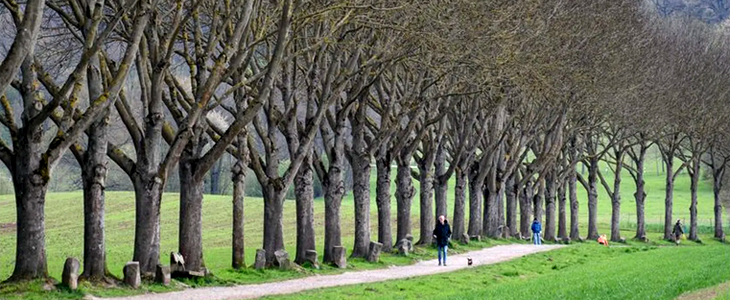Why planting a tree is a radical act – Joseph Beuys
A 1980s green project by the German artist Joseph Beuys has inspired a contemporary art duo. Bel Jacobs speaks to them about activism, hope, regeneration – and the power of nature.

Joseph Beuys’s 7,000 Oaks was created in Kassel, Germany in 1982, and pictured here in 2021 (Credit: Alamy)
In 1982, artist, environmental activist and German Green Party founder Joseph Beuys began what was arguably his most seminal work: the planting of 7,000 oak trees around a city in central Germany. Beuys conceived 7000 Eichen (or Oaks) as a way of re-connecting the traumatised citizens of Kassel – which had been heavily bombed in World War Two – with their natural environment, and to offer them alternatives to the societal structures that had taken them into war in the first place. As each tree was planted, it was paired with a pillar of basalt – the inky black, iron-rich rock formed in the cooling of a volcanic disruption – taken from a pile that Beuys’ had arranged messily on a neoclassical lawn in front of the city’s public Museum Fridericianum.
More like this:
– Hockney and Van Gogh: How images of nature bring us joy
– Why living with plants is good for you
– Why do we need to find wilderness
“It was the equivalent of dumping 7,000 rocks in the middle of Trafalgar Square,” smiles Michael Raymond, assistant curator of London’s Tate. “Initially, the people of Kassel hated this. It reminded them of the bomb sites they had witnessed over the past decade. But Beuys was challenging them. He was saying to them: if we find places to plant the 7,000 trees, we’ll remove this blight upon the town centre.” Residents, alongside city planners, gardeners and environmentalists, helped to pick locations for the saplings, and to plant them. Areas slated to become car parks suddenly became homes to young trees and communal spaces. “So many people now are hugely appreciative of these trees and the green space they provide,” reflects Raymond.

Leave a Reply